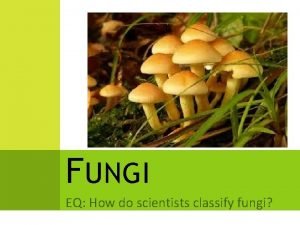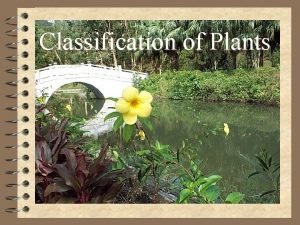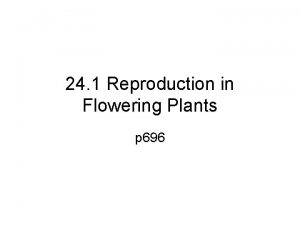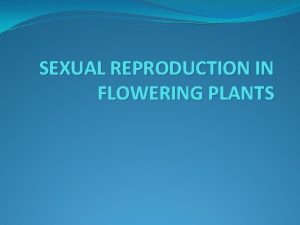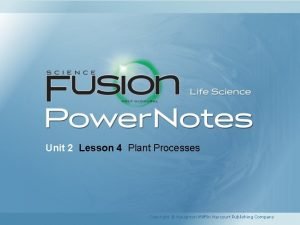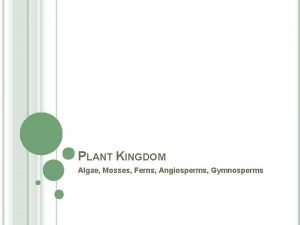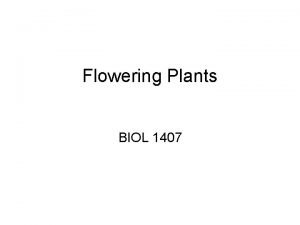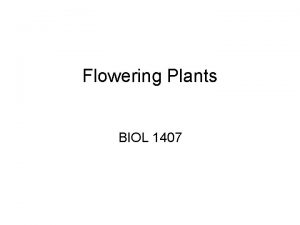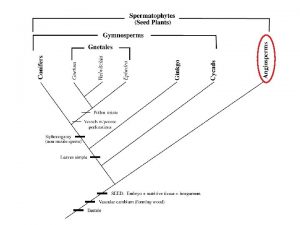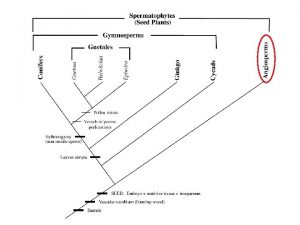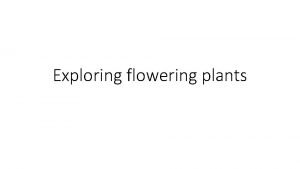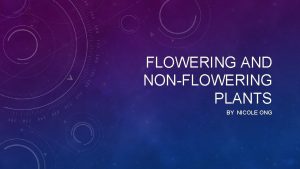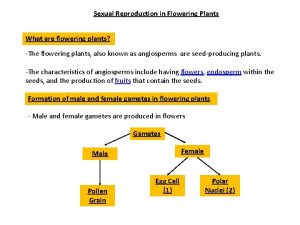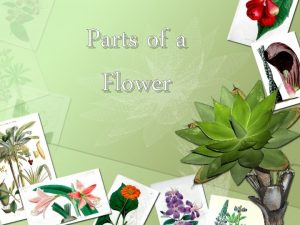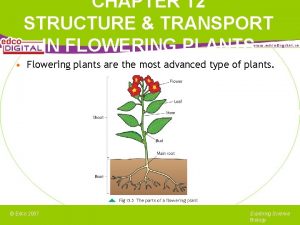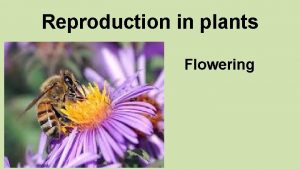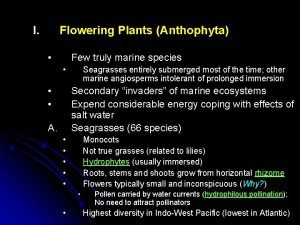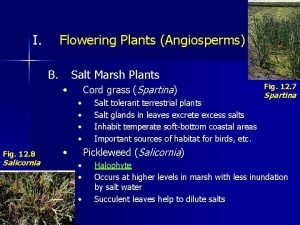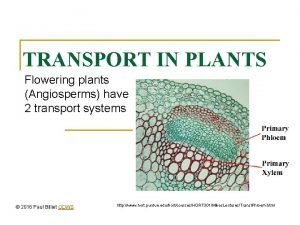There are thousands of species of flowering plants























- Slides: 23


There are thousands of species of flowering plants (Angiosperms) …

… with a range of flower types.

Flowers contain male and female parts, and each feature has a unique function.

Pollen forms in the male part of a flower, the anther.

Pollen is transferred from the anther (male part) to the stigma (female part) in a process called pollination.

Many plants, including most grass species, rely on wind for pollen dispersal.

Some plants, such as seagrasses, use water to disperse pollen.

For other plants, pollination involves complex relationships with living organisms: animals such as bats, insects and birds.

The honey possum is an animal vector in the distribution of pollen from plants in southwest Western Australia.

Some humans have a reaction to pollen, causing hay fever, although hay is rarely the cause.

Pollen grains have diverse appearances.

pollen size Pollen grains occur in many sizes. 23 µm Banksia littoralis Pollen from ‘forget-me-not’ flowers is amongst the smallest, at 6 µm diameter, while birch tree pollen is amongst the largest at 100 µm. 1 mm = 1000 µm 55 µm Grevillea Robyn Gordon

pollen shape ovoid Pollen comes in a variety of shapes: ovoid, spherical and triangular are the most common. spherical triangular

pollen STRUCTURE The outer wall (exine) of a pollen grain is tough, to protect it from the environment.

pollen OPENINGS Pollen grains may have openings (apertures) that allow for transfer of male gametes. Circular openings are called pores. Elongated openings are called colpi.

pollen surface texture psilate (smooth) verrucate (surface bumps) rugulate (irregular patterns) reticulate (net-like) striate (roughly parallel edges)

The unique features of pollen are best viewed through a microscope. To avoid contamination, attention to detail is required when making slides to view under a microscope. The type of microscope used depends on the image detail required.

ocular lens usually with magnifications of 10 x and 15 x objective lens usually with magnifications of 4 x, 10 x and 40 x OCULAR LENS TOTAL MAGNIFICATION OBJECTIVE LENS 10 x 15 x 4 x 40 x 60 x 100 x 150 x 400 x 600 x

At larger magnifications, less of the object can be seen, but more detail is visible. Banksia littoralis 200 x magnification Banksia littoralis 1000 x magnification

Electron microscopy • uses electrons instead of light, • provides higher magnifications (up to 2 million times), • provides much higher resolutions, and • requires special treatment of samples.

Scientific study of pollen has many applications. For example, it is useful in ecology, where it can help identify an animal’s diet. A honey possum eats nectar, and gets pollen on its nose when feeding. By examining this pollen, it is possible to identify flowers visited by honey possums.

 Characteristics of non-flowering plants
Characteristics of non-flowering plants Basic classification of plants
Basic classification of plants Classification of ferns
Classification of ferns Mikael ferm
Mikael ferm Keystone species in desert
Keystone species in desert What is called
What is called What part of the flower is female
What part of the flower is female Angiosperm life cycle
Angiosperm life cycle Part of flower that makes pollen
Part of flower that makes pollen Morphology of flowering plants
Morphology of flowering plants Classification examples
Classification examples Vegetative structure
Vegetative structure Plantae phylum
Plantae phylum Parts of the plant
Parts of the plant Factors affecting flowering in plants ppt
Factors affecting flowering in plants ppt Unit 2 lesson 12 flowering plants
Unit 2 lesson 12 flowering plants Multiple choice questions on flowering plants
Multiple choice questions on flowering plants Ferns and algae kingdom
Ferns and algae kingdom Plant organ
Plant organ There are thousands of regular verbs in english
There are thousands of regular verbs in english How does moss reproduce
How does moss reproduce Vascular plants vs nonvascular plants
Vascular plants vs nonvascular plants C3 plants vs c4 plants
C3 plants vs c4 plants Teths place
Teths place

